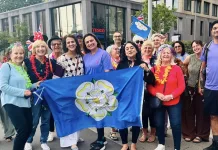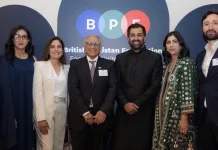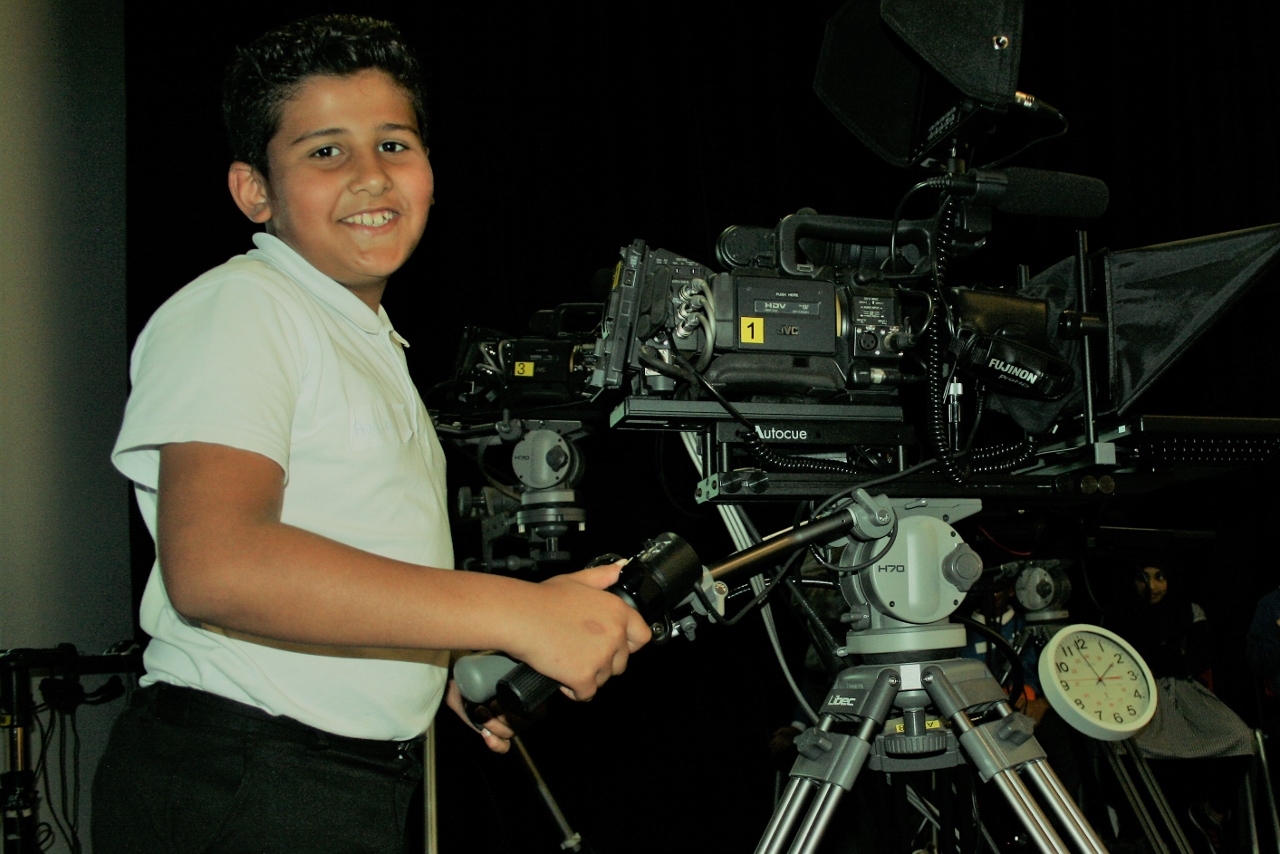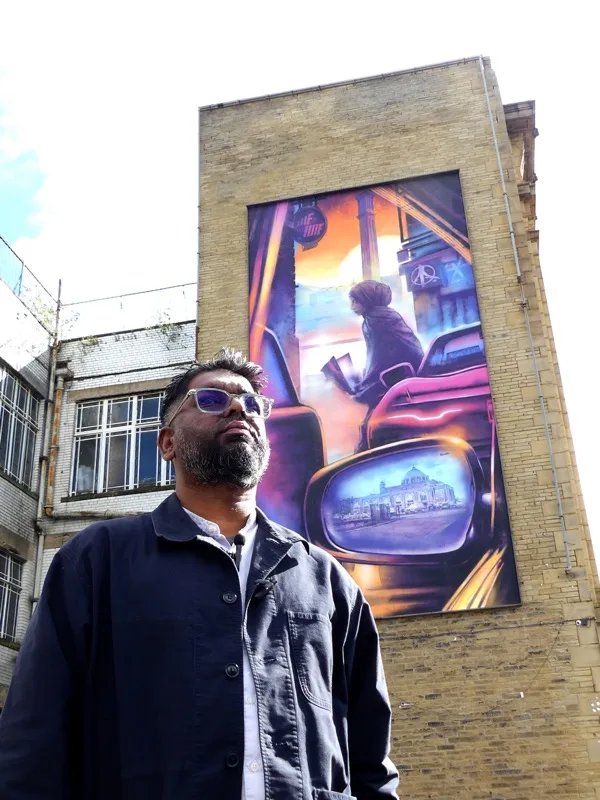
If you drive into Manningham Lane, you’re in for a BIG surprise!
‘Neon Intermission’ a 32-foot mural commissioned by Bradford community arts and culture organisation ‘The Leap’, and created by Birmingham-based street artist Mohammed Ali ‘Aerosol’, is greeting motorists and pedestrians passing the historic Connaught Rooms building.
The street art depicts a young Muslim woman taking an intermission to read whilst she leans against her car, with a part of Bradford’s cityscape reflected in a wing mirror.
The mural, along with several other pieces of public art, is part of The Leap’s Fuelling Futures campaign, a partnership with Mission 44, Bradford College and Bradford Council, alongside a wide range of businesses in the motor industry.
The huge dreamscape style artwork, which the artists said was partly inspired stylistically by the Blade Runner films, is thought to be the largest piece of outdoor art in Bradford.
Mr Ali spent a year creating it in his Birmingham studio in several different pieces, which have now been installed with the help of a crane. For the artist himself, it’s all about empowering and inspiring young people to dream big. He said his desire “was to paint some messages that are about uplifting young people and the next generation, and trying to equip them with skills and the ability to alter their futures, their trajectory”.
He added: “A lot of my work is around social justice and values that are about trying to uplift communities and bring people together. So the concept inspired me – using the arts on this big, bold scale on a giant building which you can’t miss and you can see from afar.
“I’ve got a long history in Bradford, I love the city.
“For me, this is like my gift to plant into the Bradford landscape as a big bold mural that speaks to the everyday people in a very accessible way.
“For me, taking art to everyday people is really one of my missions, and the organisations I’m aligned with, I think we’re totally on that same page.
“There’s no better medium really of taking art into the everyday more than street art. It is such an amazing way of letting art spill out onto the streets and reach people that it wouldn’t reach in a fancy gallery.”
Mr Ali also hopes the mural will fuel further interest in people creating street art, and help it play a part in Bradford’s upcoming year as UK City of Culture.
“Taking art into the streets like this at this important time, where the nation will be seeing what’s coming out of Bradford, I think it’s really timely and important to have,” he said.
Mr Ali was invited by Bradford community arts organisation The Leap to paint the mural as part of its Fuelling Futures campaign in partnership with Mission 44, which is Sir Lewis Hamilton’s charity. Its aim is to harness Bradford’s well known car culture to raise aspirations.
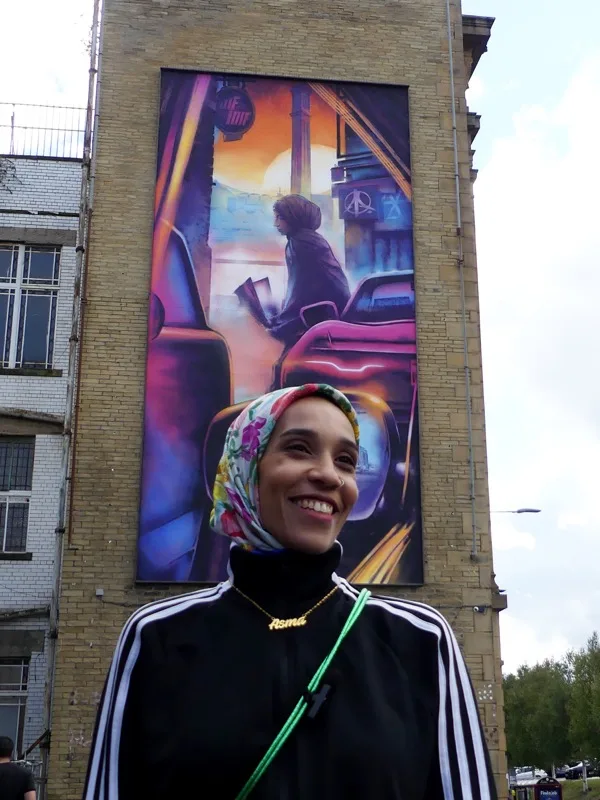
Also popping along to see it unveiled was visual artist and spoken work poet Asma Elbadawi, who is also a basketball player known for successfully campaigning to get a ban on hijabs for women partaking in the sport lifted. She said she hoped the powerful image of a girl in a headscarf would inspire other girls and young people to follow their dreams.
“I think it’s amazing. I’m dyslexic, I have my own way of communicating, mostly through art.
“Something like this, that has such a strong message that can be seen by people driving by and walking by, is pretty amazing.
“Having messages likes this like across different areas in Bradford, but especially here on such a busy road, is really good for people to see. It’s powerful – it sends a message straight away to young people, and tells them to dream.”
Sabir Musaji from The Leap said: “A piece of art like this can really make a difference and that’s what we’re about. “This is now going to be one of three new cultural landmarks from The Leap. “We’ve done the Living Wall on Leeds Road, we are also working towards an eco-park, and this.
When people give directions, people are going to be referring to this as a landmark like ‘take a left at the mural’. We’ve been very lucky to work with some amazing partners including Mohammed Ali.”
The mural took a team of three people three days to install in its component parts, which included 16 separate wooden panels built together.



